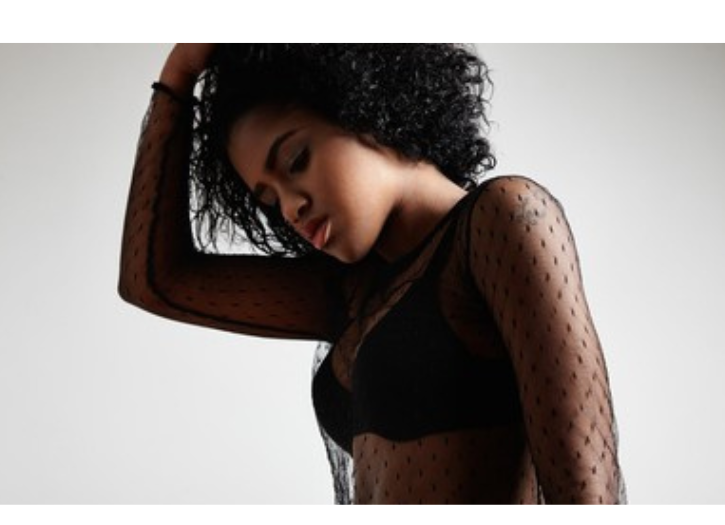See-through clothing is any garment of clothing made with lace, mesh or sheer fabric that allows the wearer’s body or undergarments to be seen through its fabric.
See-through fabrics were fashionable in Europe in the eighteenth century. See-through and transparent clothing became very fashionable in the latter part of the 1960s. In 1967, Missoni presented a show at the Palazzo Pitti in Florence, where Rosita Missoni noticed the models’ bras showed through their knit dresses and requested they remove them.
The see-through look was subsequently presented by Yves Saint Laurent the following year, and in London, Ossie Clark presented sheer chiffon dresses intended to be worn without underwear. The trend led to jewellery designers such as Daniel Stoenescu at Cadoro creating “body jewellery” to be worn with sheer blouses and low-cut dresses. Stoenescu designed metal filigree “breastplates” inspired by a statue of Venus found at Pompeii, which functioned like a brassiere and were designed to be visible through the transparent shirts while preserving the wearer’s modesty.
A fashionable garment in the early 20th century was the “peekaboo waist”, a blouse made from broderie anglaise or sheer fabric, which led to complaints that flesh could be seen through the eyelets in the embroidery or through the thin fabric. In 1913 the so-called “x-ray dress”, defined as a woman’s dress that was considered to be too sheer or revealing, caused similar consternation. In August that year, the chief of police of Los Angeles stated his intention to recommend a law banning women from wearing the “diaphanous” xray dress on the streets. H. Russell Albee, the mayor of Portland, Oregon, ordered the arrest of any woman caught wearing an xray dress on the street, which was defined as a gown cut too low at the neck or split to the knee.
The following year in 1914, Jean-Philippe Worth, designer for the renowned Paris couture House of Worth, had a client object to the thickness of the taffeta lining of her dress, which was described as “thinner than a cigarette paper”. Worth stated that using an even thinner, sheerer lining fabric would have had the effect of an “x-ray dress”.In Australia, an article was published in The Daily Telegraph on the 24 November 1913 strongly opposed to “freak dresses” and “peek-a-boo blouses” that had lately become the fashion in “other Capitals”. The editorial complains of dresses of “exiguous transparancy and undue scantiness” and “the low-cut blouse that invites pneumonia”.
A see-through dress worn by Kate Middleton, princess of Wales, to a charity fashion show in 2002 was sold at auction on 17 March 2011 for $127,500. See-through materials of various kinds continue to be available for a wide range of clothing styles. See-through fabrics have been featured heavily on high-fashion runways since 2006. This use of see-through fabrics as a common element in designer clothing resulted in the “sheer fashion trend” that has been predominant in fashion circles since 2008.
Photo Credit: Shutterstock







Add Comment